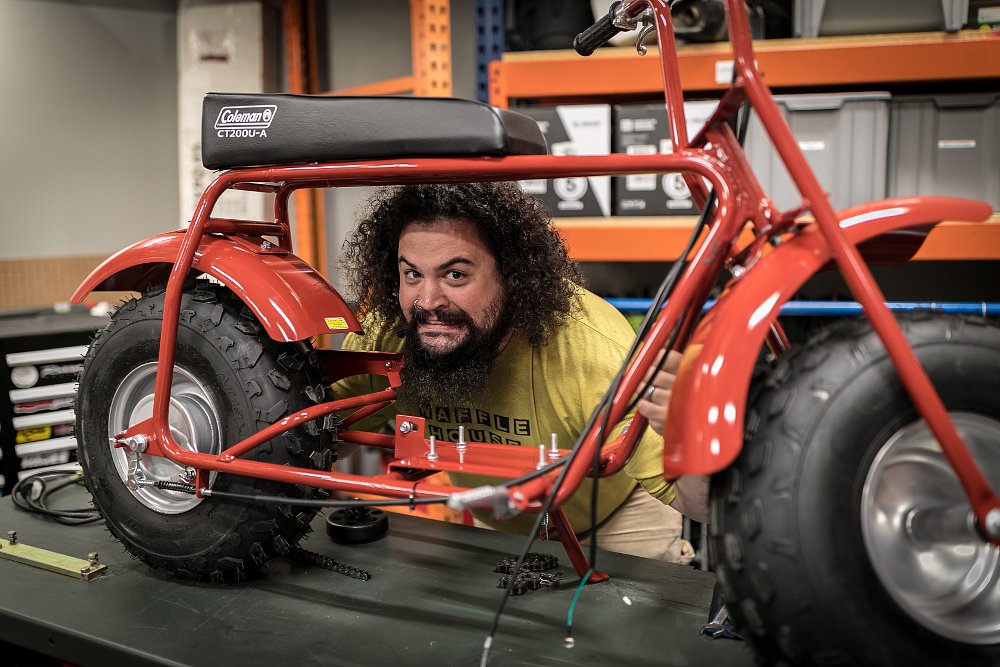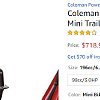I caught myself feeling really down about bikes one too many times.
I can’t really afford a new bike right now, in terms of cash or the time needed to ride it. I’m a little sad at how expensive old bikes have become in such a short period of time, because fixing up something unloved and making it something of value once again has always been a job I have enjoyed doing. I get a little bummed when non-riders staunchly filibuster about safety as soon as the topic of motorcycles comes up. I’m not fond of hearing someone tell someone else their bike sucks. In essence, in spite of all efforts to prevent it, I didn’t “give a shift,” to appropriate an expression I’ve heard lately.
And then I remembered something I say a lot. “You gotta make your own happiness.” I stopped the silent sniveling, and decided to do something to make myself happy again.
I bought a minibike.
I bought it with the intention of returning to modifying things with reckless abandon; of performing dangerous open-heart surgery; of pumping up power output with little or no regard for one’s own safety or the wisdom of such tinkering. A minibike seemed like a very good medium upon which to put those ideas into practice.

I needed a break from building bigger, more expensive bikes. Many bikes nowadays are just too valuable to hot rod, and deep down, I am not a “stock bikes” kind of guy. I wanted something built in the spirit of a 1950s car or race bike: a hot, hot motor shoved into a chassis that’s totally overwhelmed by it. I also knew that for my own satisfaction, two things had to be true of this bike: It needed to have a one-speed centrifugal clutch, and it also needed to be a fully rigid bike with super-sketchy brakes. I know modern minibikes have swoopy frames and top-mounted tanks, and they have rudimentary suspension. I also know Comet Torq-a-Verters exist, but to me, a minibike should be a simple affair and kind of deathtrap-y. No transmissions; just a lawnmower engine, wheels, and a completely rigid frame.
I scored a Coleman CT200U brand spankin’ new from Amazon, which apparently has a 200-pound weight rating, meaning I should not ride it and probably not jump it and it will not put up with the stresses of a full-grown Lem. If it does not, then I’ll be welding up A) the frame when it breaks, B) additional gussets and C) a set of wheelie bars if I built the engine right. I bought mine for $481.03 before tax on May 24. Just a little over a month later, that price on Amazon has jumped to a whopping $718.97. I’m glad I scored mine when I did; this project at that price starts launching up into “real bike” money.
Why?
I think most people either completely understand why I am doing this, or they can’t even begin to fathom it. Of the people I talked to who seemed to understand why I wanted to do this, some said, “Man, I wish I still had my minibike.” The other half of people who “got it” said, “Man, I always wanted a minibike!”

Minibikes are motorcycles boiled down to the essential ingredients, maybe even purer than the chopper or streetfighter. They’re stupid-fun, scary in a not-super-dangerous way, easy to work on and build, and about as cheap as a motorcycle can be. Plus, they’re approachable. (At least until you shove way too much motor into one.) Normally, about one person a year politely hints that they’d like to ride one of my choppers, which I dutifully ignore. With my Colemans? I literally could not keep people off them, which is fine by me.
The plan
Minibikes used to be powered by flathead engines made by Briggs & Stratton, Tecumseh, and a few others. It turns out, though, that those are kind of desirable these days, and worth some money. Neat, but not for me. As it turns out, since I was a kid, modern go-karts and minibikes are usually powered by one of two powerplants: Honda GX-series engines (or clones) or the Predator series, distributed by Harbor Freight, which is sort of a loose Honda clone. There is some crossover between parts for the two, but if one is seriously going to modify these bikes, one has to pick a path and run with it. I chose to buy a Predator engine. It’s got more bore and more stroke than the GX clones… for $116.63 right off the bat. Cheapest bore and stroke job I’ve ever gotten my hands on.
Stock, both engines crank out about 6.5 hp at a governed 3,600 rpm. My plan to make this bike scary-fast mostly is based on pulling more revs out of it. There is a governor on these engines for a reason: You can only have so much fun from a little engine before someone loses an eye. The con rod and flywheel are both cast metal, and I’ve personally shot one of those pieces out of a block at a high rate of speed from overzealous tuning. (The lawn was only half-mowed that day. Mrs. Lem was a little pissed.)
Defeating the governor externally is possible, but not recommended. The plastic the internal gear is made of can and will grenade. Same deal with the flywheel. So I planned to remove both by splitting the cases, but that ignored the reason the governor exists: to keep things from breaking. The biggest items of concern are the connecting rod and the flywheel, which are capable of coming apart violently. After that, the limiting factor is the valve springs, which begin to float near 5,500 rpm.

Thus, I intended to install heavier valve springs, a billet con-rod, and a stronger flywheel (that also bumps up the ignition advance) to keep things safe at less-sane engine speeds. Now, especially on a high-revvin’ machine, flow in and out of the cylinder would be pretty important, so my plan included an intake, air filter, exhaust system, jet and emulsion tube to help extract maximum performance from my mower motor.
Here’s where I’m at so far. I have a pile of parts, all sitting in their boxes. Here’s my costs (shipped) at the moment:
- Coleman CT200U $509.89
- Predator engine $116.63
- Plastigage $11.64
- 18-pound valve springs $10.60
- Rod, flywheel, gaskets, cam $275.59
- Exhaust, intake, emulsion tube, spark plug, air filter $94.95
- 22 -pound valve springs, two main jets $27.60
- Two pilot jets $14.28
In the next article, I’ll break out what I’ve purchased exactly and why.












